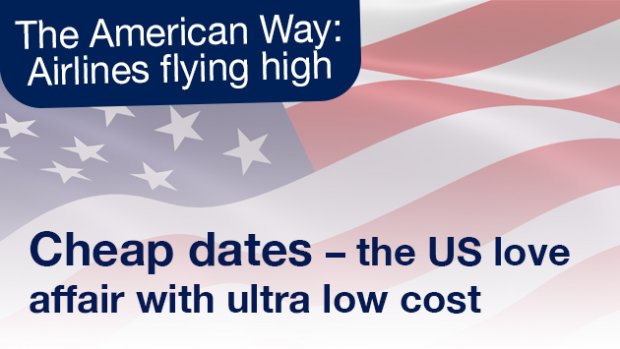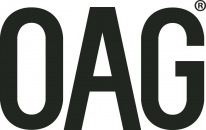The American Way – Cheap Dates

If you can’t beat them, join them. Or so the motto goes. Having spent years assuming the market could be segmented into discrete passenger types, US legacy carriers are waking up to the idea that price really does drive customer purchase.
If you can’t beat them, join them. Or so the motto goes. Having spent years assuming the market could be segmented into discrete passenger types, US legacy carriers are waking up to the idea that price really does drive customer purchase.
First the low-cost carriers (LCCs), the likes of Southwest Airlines and JetBlue, made a major dent in legacy carrier market shares, and now it may be the turn of the ultra low-cost carriers (ULCCs). Today, Frontier Airlines and Spirit Airlines are the vanguard of this new wave of ultra low-cost airline product.
Today, these carriers are still relatively small. Spirit Airlines, now the 7th largest US carrier, operates 2.7% of the seats operated by US domiciled airlines and Frontier Airlines, the 8thlargest carrier, operates another 1.5%. Together they operate 4.2%, but this is up from 2.9% just three years ago.
February 2017 sees Frontier Airlines adding 46 routes to the total number operated in February last year, bringing the total to 139 routes. The number of airports served has grown by 7 to 52. This is all part of the network restructuring which has seen the airline move away from a hub-and-spoke system centred on Denver to a point-to-point network, which led to some downsizing of the network at this point last year.
At Spirit Airlines, the number of airports they operate into has remained fairly flat but the number of routes operated has grown from 112 in February 2014 to 174 this month, as they connect up more of the nodes on their network.
Comparing their growth to the US airlines as a whole, both carriers are adding significant capacity. While US carriers are operating 3% more seats in February 2017 than last year (adjusting for the extra day in February 2016), Frontier Airlines is operating 7% more seats and Spirit Airlines is operating 12% more.
The ULCCs have taken the notion of no frills to a new level with their ‘à la carte’ approach to the product. Spirit Airlines call it ‘Bare Fare’ for which passengers buy the additional elements they require. Almost nothing comes for free.
Clearly concerned, Delta Air Lines has launched its ‘Basic Economy’ product, like Economy but less, and United and American are following suit. While this move will go some way to competing with the fares available on ULCCs, it doesn’t address the fundamental cost issues for the legacy carriers.
For instance, one of the aircraft types that Spirit Airlines, Frontier Airlines, American Airlines and Delta Air Lines all operate is the Airbus 321. But look at the number of seats on each aircraft. The legacy carriers average 187 and 192, respectively, while the ULCCs manage to squeeze 218 and 230 seats on average. More seats translates to lower costs per passenger which can then be translated into very competitive pricing.
A look at the largest routes operated by these two ULCCs also makes the point. For Frontier Airlines, the largest route in terms of seats, is Denver to Salt Lake City. The airline operates the lowest number of flights on the route but has the largest average aircraft size. The same is true for Spirit Airlines’ largest route, Fort Lauderdale to New York’s LaGuardia Airport. While some of the difference may be accounted for by different aircraft types, some of the airlines use the same aircraft type.
While we have yet to see how successful legacy carriers will be in their efforts to mimic elements of the ULCC product, the winners will surely be the passengers who seem to love their low-cost fares.


